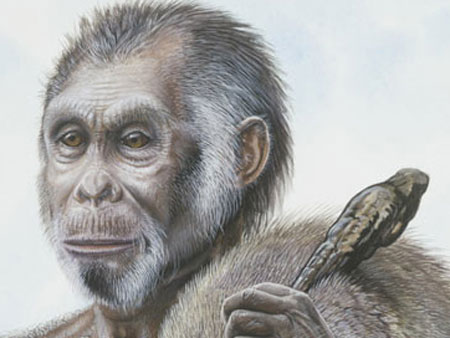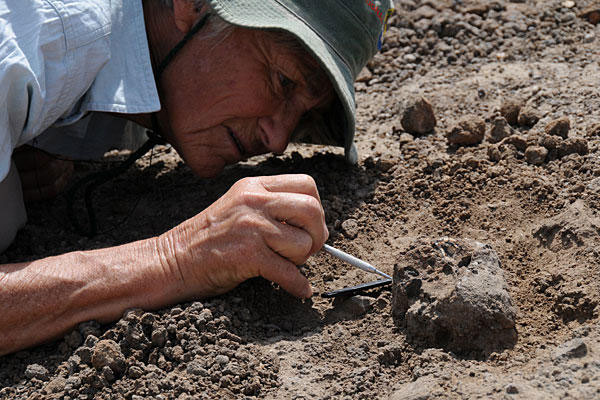A new race will show up
The fossils discovered by researchers in Kenya show a group of people never before known, who lived together with our ancestors nearly two million years ago.
Meave Leakey, a paleontologist of the Turkana Institute in Kenya, and colleagues discovered fossil bones and jaw bones of people near the Koobi Fora region in northern Kenya in 2007 and 2009. They are located in one where the radius is more than 10km from the location of the skull KNM-ER 1470. The pieces of facial bone belong to one person, while the jaw bone belongs to another. Their date is about 1.78 to 1.95 million years. Analysis results show that they belong to a new strain.Homo floresiensis , the name of this strain, is much lower than that of modern humans, the AP reported.

Homo floresiensis illustration. (Photo: Guardian)
'Those dwarves have very flat faces. You can draw a straight line from the eye sockets to the baby teeth on their skulls. Their existence showed that two million years ago, Africa was a crowded place with many Fred Spoor strains , " said a researcher at the Max Planck Evolutionary Anthropology Institute in Germany.
Humans began to evolve in Africa from about 2.5 million years ago. Archaeologists calculate this time thanks to the first stone tools they discovered. Modern people, Homo sapien, are the only human race to live today. But in fact some other strains have appeared and disappeared on Earth.

Ancient creature creator Meave Leakey carefully unearthed pieces of fossils
Human skull in a place near the Koobi Fora area in northern Kenya
During the first half of the last century, most of us believed that the immediate ancestors of modern humans were Homo erectus strains - those with small skulls, dark eyebrows, straight gaits and appearances about 1.8 years ago. million years.
But more than 50 years ago, scientists discovered an older human race at Olduvai gorge in Tanzania. This human race, called Homo Habilis, has a smaller brain and primates resembling primates than modern humans.

Then in 1972, archaeologists discovered a human skull in northern Kenya. The owner of the skull, called KNM-ER 1470, is a person with a larger brain and flatter face than the human race found in Tanzania. So some researchers claim it to be a separate race. They call it Homo rudolfensis . Since the 1970s, anthropologists have argued about this strain, because many people do not consider them a separate race.
If Homo rudolfensis is not considered a separate strain, at least two strains of humans once existed with the ancestors of modern humans in northern Kenya.
'At least two strains of humanity have lived with our direct ancestors nearly two million years ago,' Leakey said.
The Leakey group's research is published in Nature.
Reference: Daily Mail
- The first race on the Moon may take place next year
- Race sperm
- Real damage controls the brain
- Racing car for people with spinal paralysis
- Heart with the marathon on the strings suspended 100m above the ground
- The father of the aircraft will organize the aerial race in 2019
- Audi makes autonomous vehicles for the Google Lunar X-Prize race
- Why did human ancestors win the evolution race?
- Newly discovered birds in Idaho 'Arms race' for co-evolution
- Intel 'abandoned' AMD in the 4-core chip race
- Hot universe race in Asia
- In the next 30 years, the only thing that can be done is to be happy and give birth
 Discovered an ancient centipede fossil 99 million years old
Discovered an ancient centipede fossil 99 million years old Discovered bat-like dinosaurs in China
Discovered bat-like dinosaurs in China Discovered a 200-year-old bronze cannon of the coast
Discovered a 200-year-old bronze cannon of the coast Discover 305 million-year-old spider fossils
Discover 305 million-year-old spider fossils